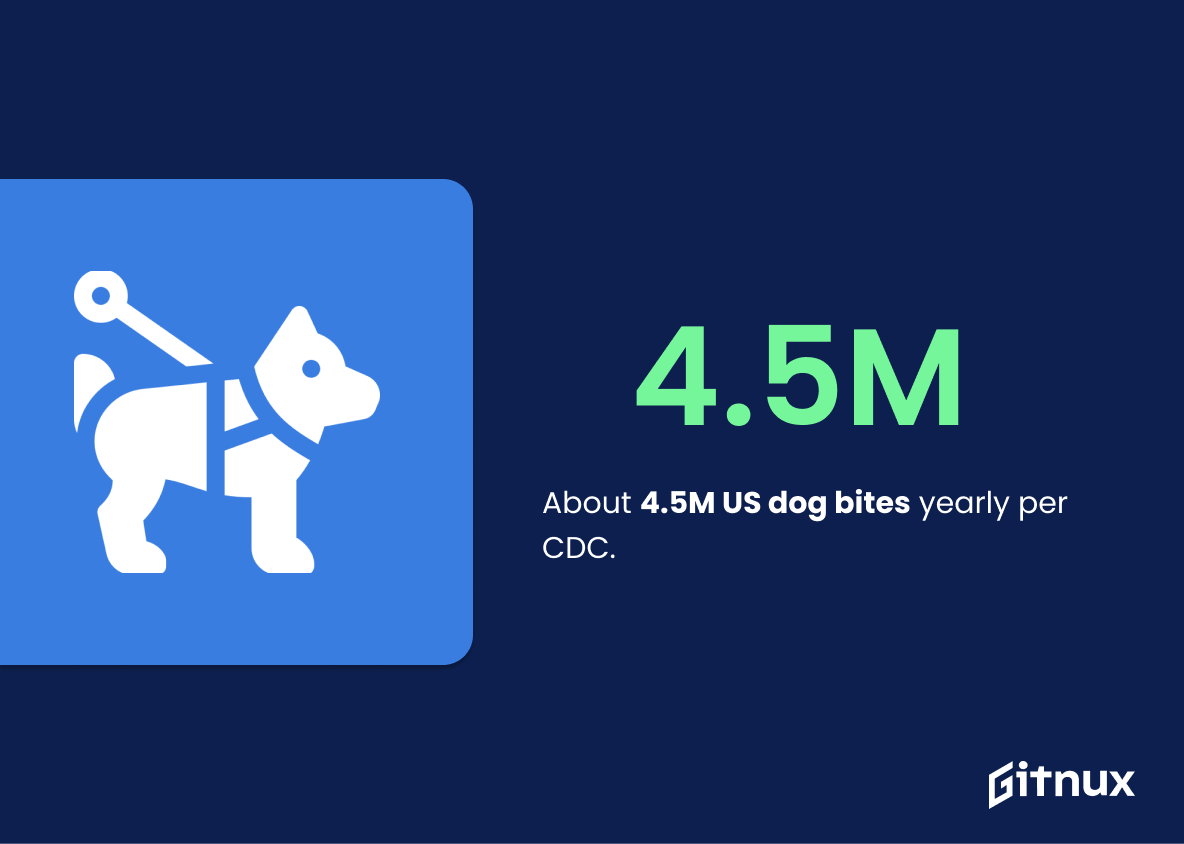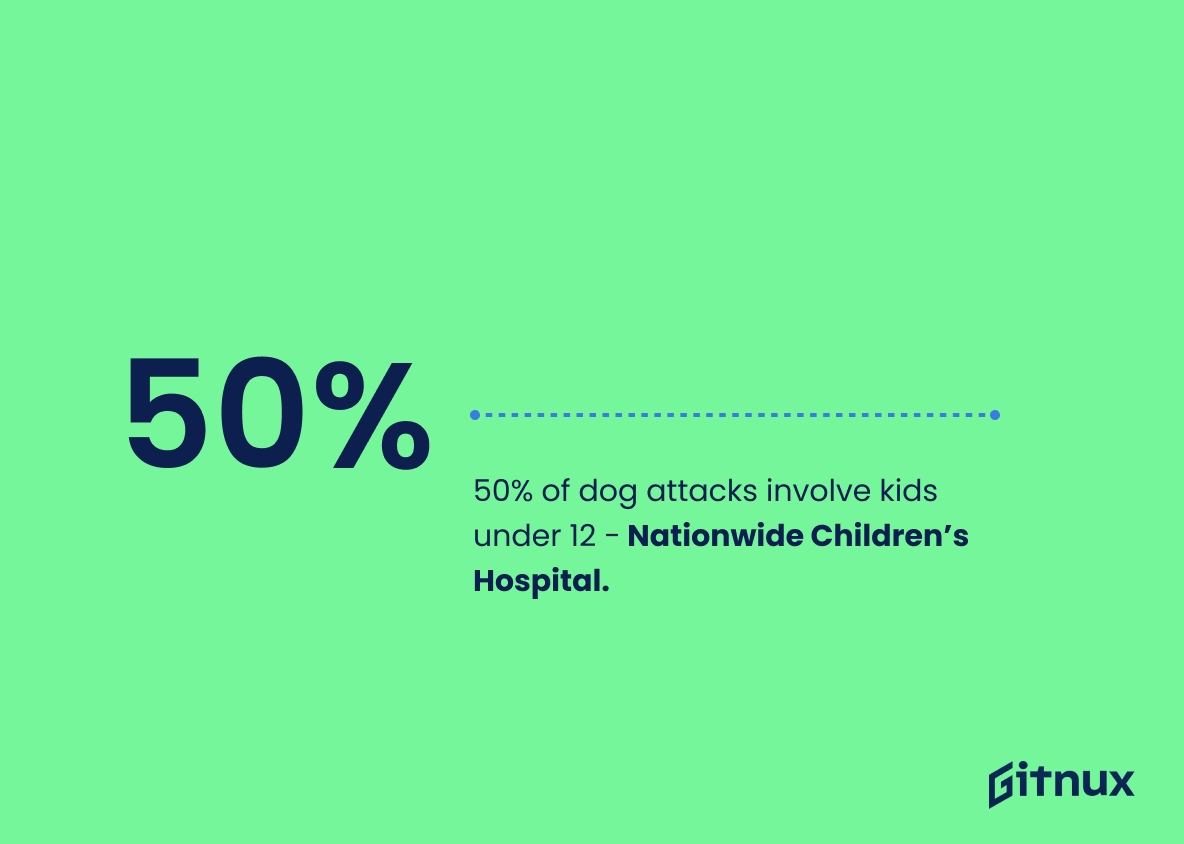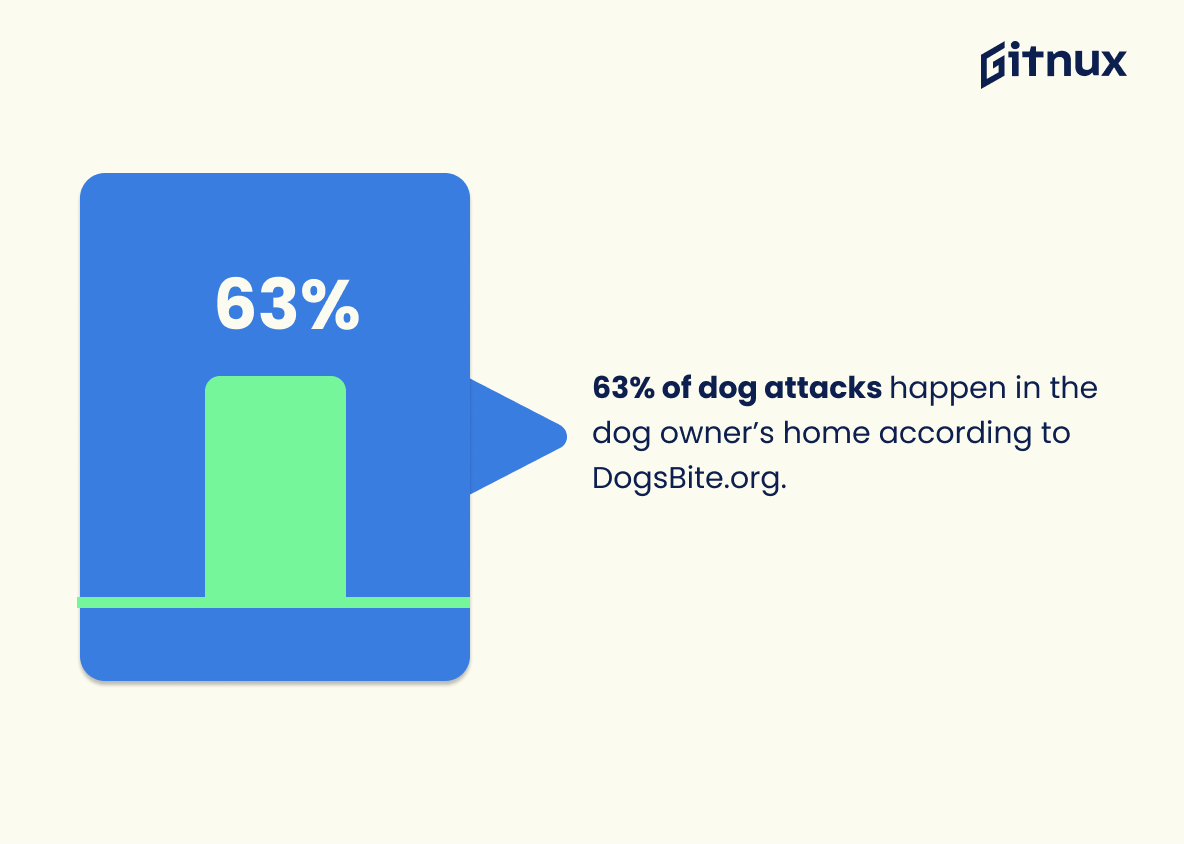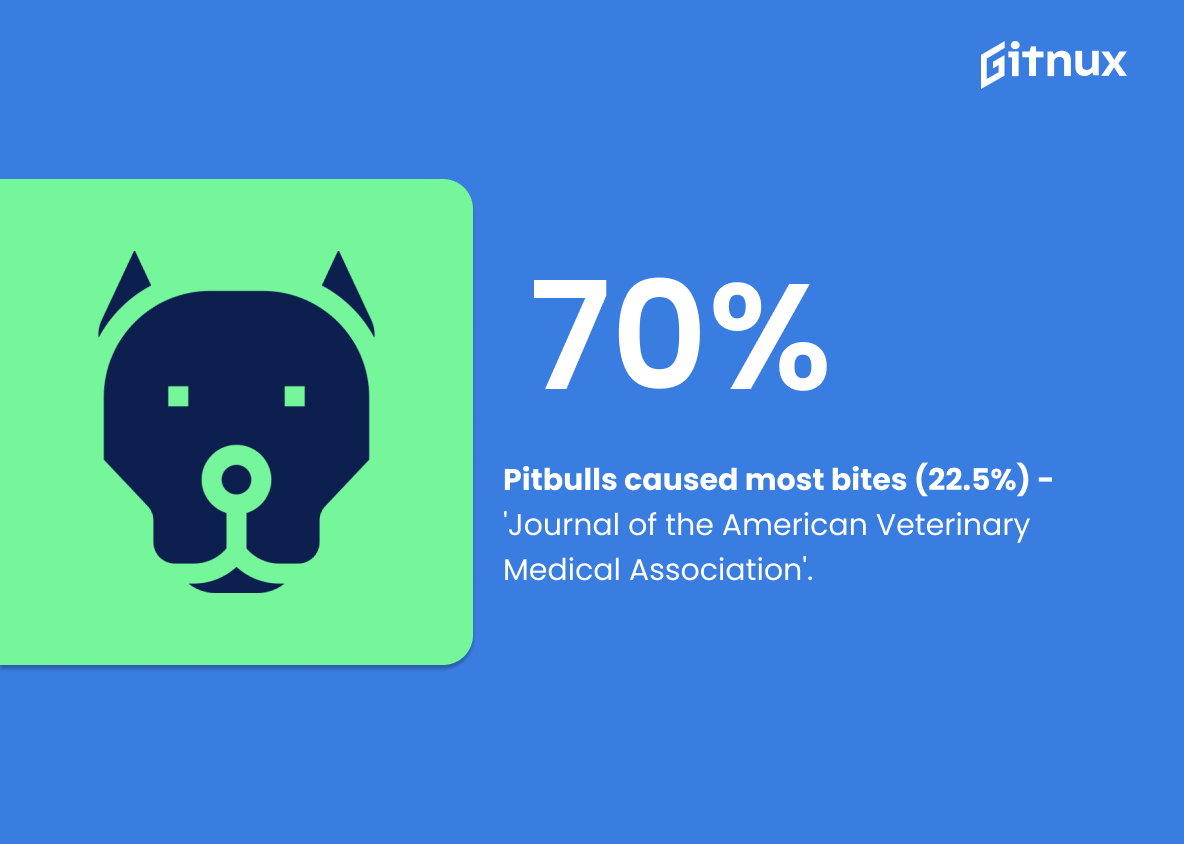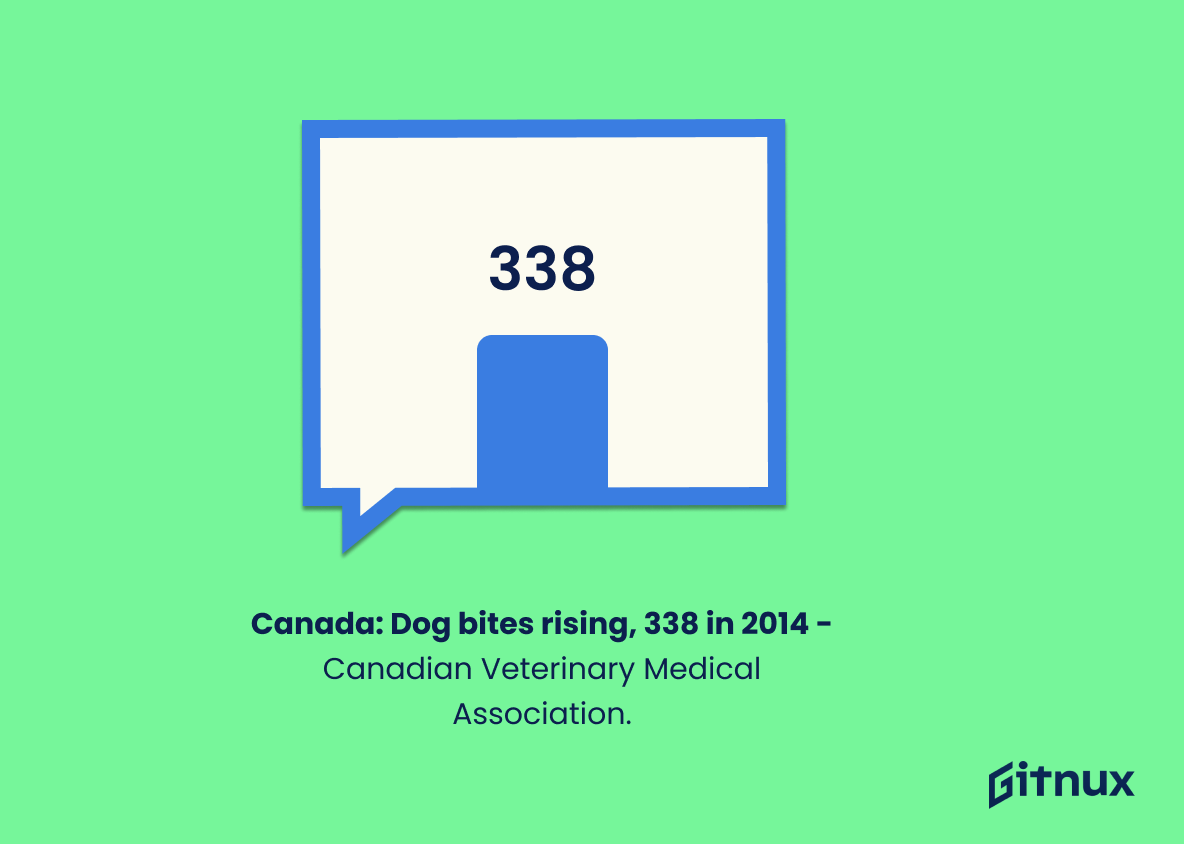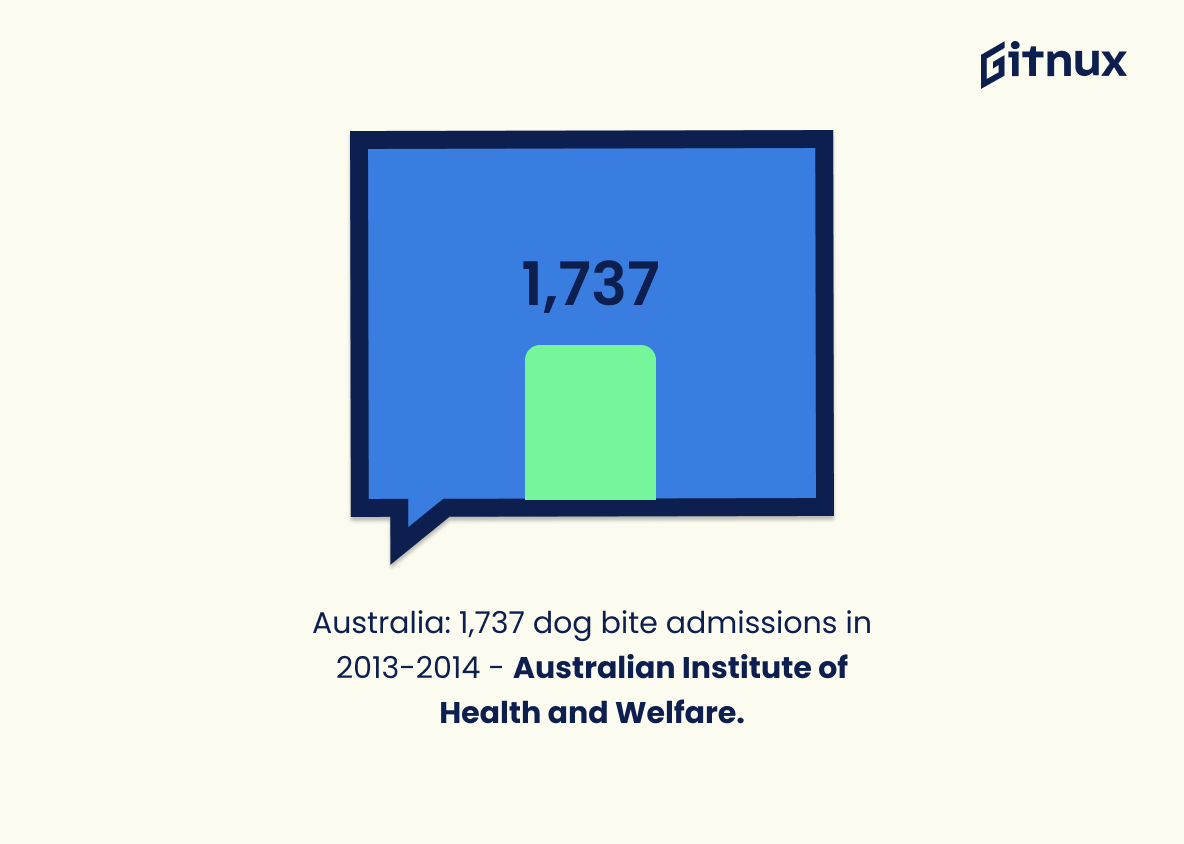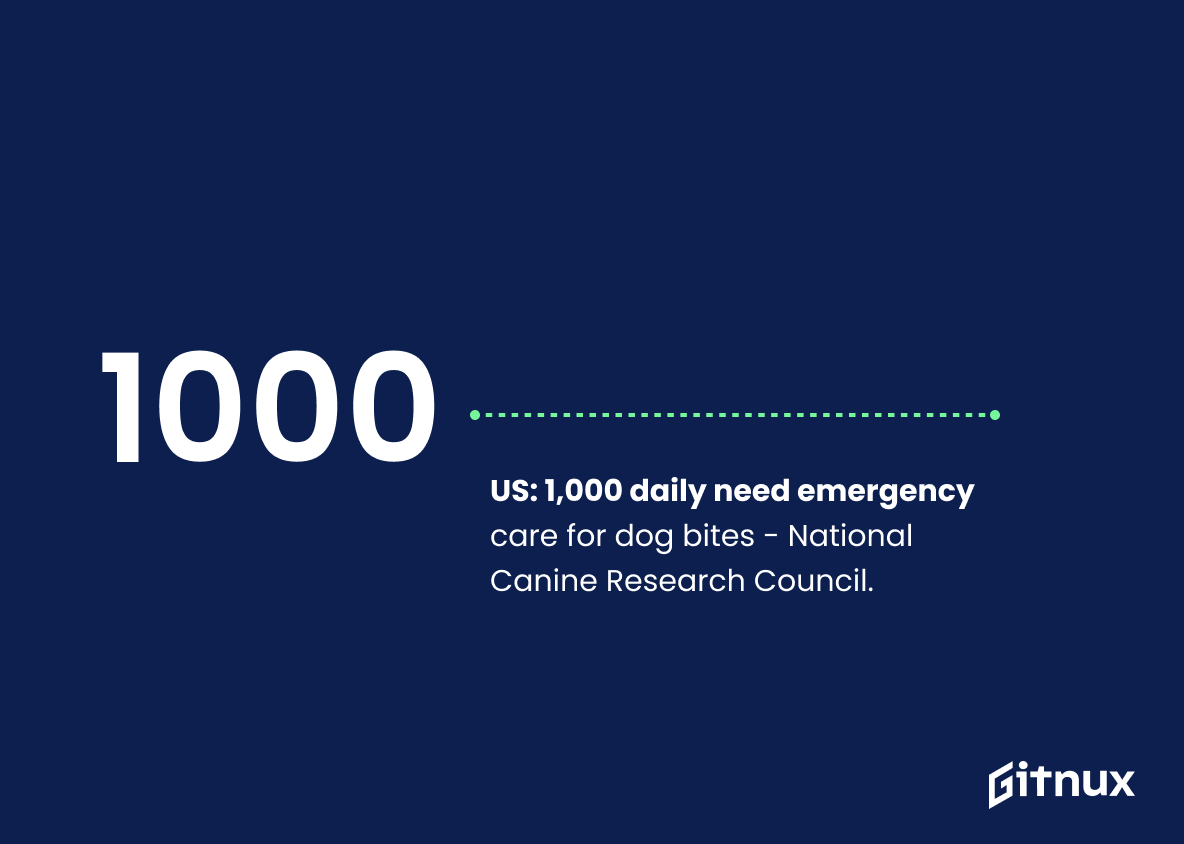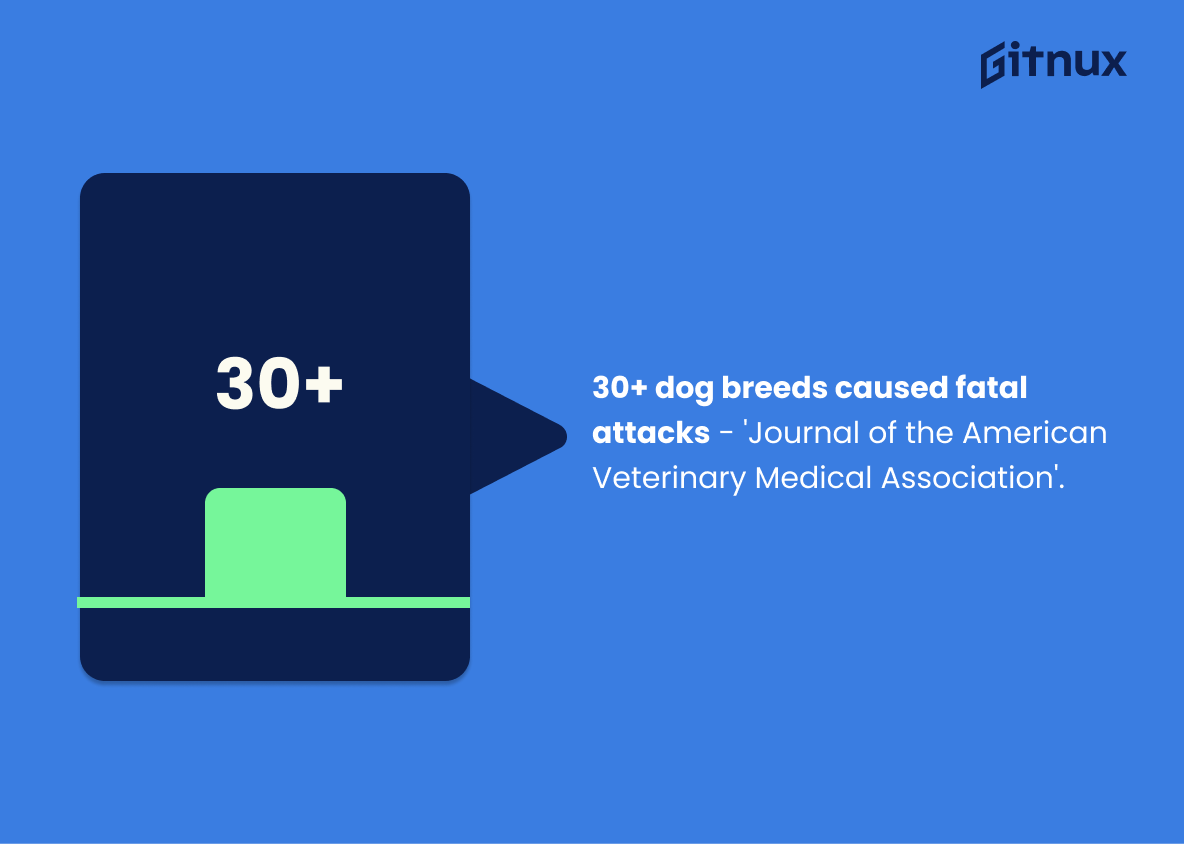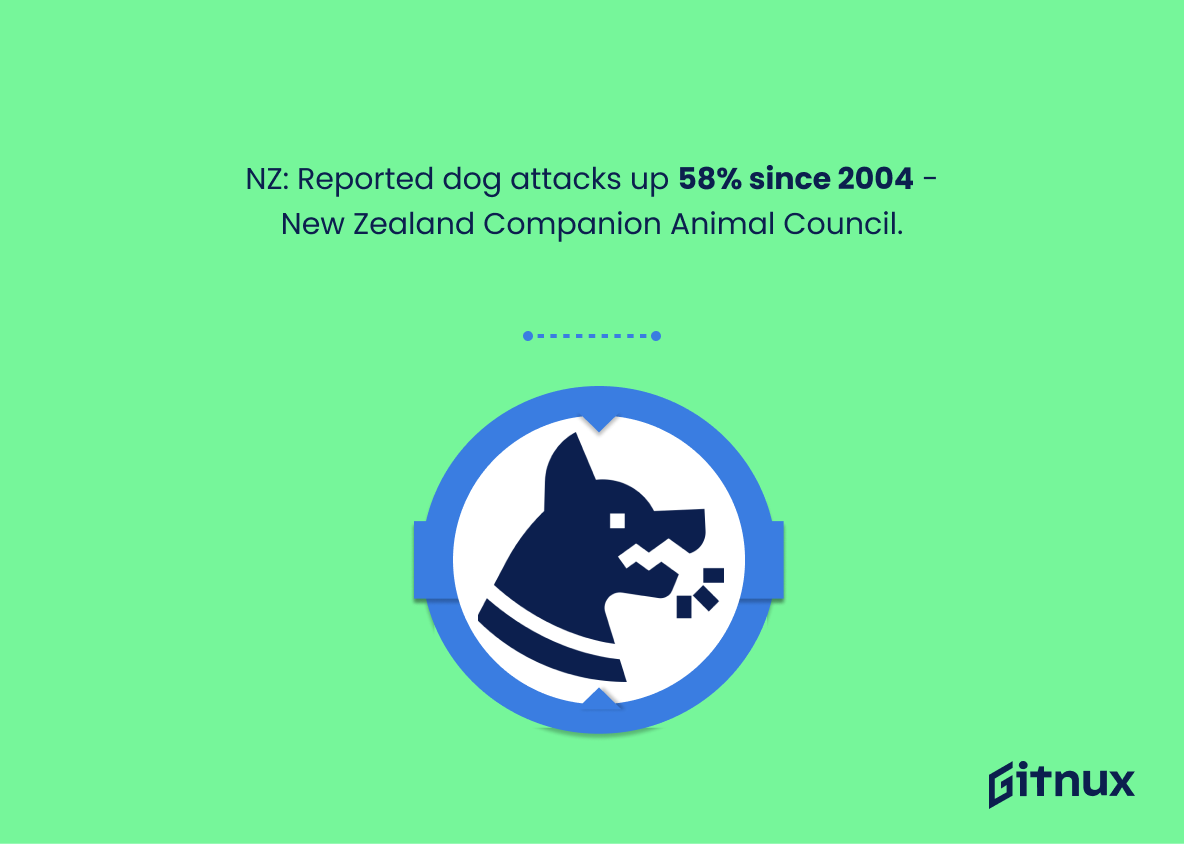Dog attacks are an unsettling aspect of pet ownership that we tend not to think about until we are faced with alarming headlines or personal experiences. However, the threat is more real than many realize. This blog post delves into the sobering reality of dog attacks, aiming to shed light on crucial statistics surrounding these incidents. Understanding patterns, breeds most likely involved, and preventive measures can turn this knowledge into a powerful tool to decrease the frequency of these unfortunate incidents. Join us as we explore the scientific data behind dog attacks, contest popular misconceptions, and arm pet owners with the essential information necessary to ensure safer communities for both dogs and humans alike. These statistics aren’t here to scare, but to educate, enlighten, and ultimately bring about a safer world for our furry friends.
The Latest Dog Attacks Statistics Unveiled
Approximately 4.5 million dog bites occur each year in the USA, according to the Center for Disease Control (CDC).
In a symphony of numbers unfolding the canine-human narrative, the alarming melody of approximately 4.5 million dog bites each year in the USA, rings out, a stark testament from the Center for Disease Control (CDC). This uptick echoes in the corridors of our understanding about dog attacks, resonating with potential implications for public policy, safety measures and the cohabitation dynamics between man and his proverbial best friend. Through the prism of this glaring statistic, we not only grapple with the magnitude of the problem, but also get a compass to navigate towards remedial initiatives in terms of behavior training and controlling dog populations. The high frequency of these incidents prompts us to reassess our interaction with our pets, casting a spotlight on the humane treatment and understanding of these fluffy companions. We are nudged hence, to see beyond the numbers and seek holistic solutions in our shared societal spaces.
In 2019, 8,000 dog bite claims were filed in the USA, as reported by Insurance Information Institute (III).
This intriguing piece of data casts light on the sometimes shadowy realm of dog attacks. As provided by the reputable Insurance Information Institute (III), there were 8,000 dog bite claims filed in the USA in 2019. It serves to underscore the measurable impact of such incidents and provides a quantitative perspective on the frequency of these encounters. By injecting these figures into the dialogue in a blog post about Dog Attacks Statistics, readers are granted a clearer image of the situation. This can thereby catalyze sensible conversations around dog owner responsibility, conversation about breed tendencies, insurance coverage, and preventive measures. This fact ultimately sharpens the focus from merely anecdotal assertions to reality captured in numbers.
Around 50% of dog attacks involve children under 12 years old, suggests a study by Nationwide Children’s Hospital.
One cannot overlook the striking fact, unmasked by a study at Nationwide Children’s Hospital, revealing about half of documented dog attacks involve children under 12 years old—a cogent point providing depth to our understanding of dog attack phenomena. It furnishes insight into the age groups that are predominantly affected, underscoring the role the vulnerability and size of children play in their exposure to such threats. From a preventive point of view, it implores the necessity for appropriate safety measures, especially around young children, to curb this alarming statistic. This piece of data further warrants critical exploration into behavioral elements of dogs around minors, possibly informing future research, policy and public safety education. So, as we take you through the grim world of dog attacks statistics, bear in mind this significant figure—it drives home not just numbers, but stories, a call to action, and a plea for greater vigilance where our little ones are concerned.
63% of dog attacks happen in the dog owner’s home according to DogsBite.org.
Delving into the significant detail of ‘63% of dog attacks happening in the dog owner’s home’, as reported by DogsBite.org, we illuminate a vital facet of canine behavior. This statistic undermines a prevailing assumption that dog attacks are largely outside incidents involving stray or unfamiliar dogs. Instead, it illustrates that potential danger is often lurking closer to home, calling for proactive measures to be implemented right within our households to prevent such incidents. Thus, it accentuates the importance of proper dog training, socialization, and management of canine behavior to ensure a safe and harmonious cohabitation with our four-legged companions.
In 2018, there were 36 fatal dog attacks in the United States, as per data from DogsBite.org.
Integrating the statistic about the 36 fatal dog attacks in the U.S. in 2018 as per DogsBite.org, casts a sobering light on the seriousness of the topic in a blog post about Dog Attacks Statistics. It stands as a stark reminder that even man’s best friend can sometimes be a source of unfortunate tragedies. The inclusion of this data provides irrefutable empirical evidence that underscores the magnitude of the problem and draws attention to its dire consequences. In doing so, it amplifies the urgency of the discussion, inviting readers to engage more profoundly with the subject, and possibly driving policy changes or encouraging greater responsibility among dog owners.
Pitbulls were responsible for the highest number of reported bites across all breeds (22.5%), according to a study in the ‘Journal of the American Veterinary Medical Association.’
Highlighting the percentage of reported bites attributed to Pitbulls, as outlined in the ‘Journal of the American Veterinary Medical Association,’ serves as an important cornerstone in the discussion of Dog Attacks Statistics. It strikes a chord, shedding light on a particular breed’s involvement and bringing into focus areas that could potentially require more attention for pet owners, breeders, and animal control officials. Not only does it indicate the need for comprehensive education and awareness about the breed, but it also pinpoints the necessity for careful breed-specific handling and training measures. Furthermore, the stark data underlines a critical aspect in devising policies and regulations for dog breeding and ownership.
In Canada, dog bites have been increasing year by year, with 338 occurring in 2014, according to a report by Canadian Veterinary Medical Association.
Inflating the thread of our narrative, a Canadian Veterinary Medical Association report punctuates our understanding of escalating dog bite incidents in Canada, where 338 were documented in 2014. This upward trend mirrors a less-than-flattering canine reality that may proclaim, louder than words, a growing public safety concern over dog attacks. Considering our blog post topic on Dog Attacks Statistics, the cited statistic offers a compelling Canadian viewpoint, providing us with vital longitude to navigate the uncharted waters of this global issue.
In the United Kingdom, hospital admissions for dog bites have risen by 76% in the past decade, according to Hospital Episode Statistics.
This captivating statistic paints a vivid portrait of the escalating concern of dog bites in the United Kingdom. Featuring a whopping 76% rise in hospital admissions over the past decade, it acts as a clear warning bell echoing the reality of the escalating issue of dog attacks. This statistic primarily signifies two important trends – escalating aggression in dogs, perhaps due to poor training or abuse, and an increasing number of interactions between dogs and humans that result in harm or injury. In a blog post dedicated to Dog Attacks Statistics, this data punctuates the need for proactive measures, from effective dog handling and training to promoting responsible pet ownership to curb this growing menace. Its inclusion reaffirms the gravity of the situation, thereby stimulating thoughtful action and discourse on safeguarding public health and safety.
about 1 in 5 people bitten by dogs require medical attention, as per the information from CDC.
Delving into the intriguing world of statistics, we encounter a striking piece of data: according to CDC, approximately 1 in 5 people bitten by dogs require medical attention. This is no trivial piece of information. Picture this – each fifth dog bite takes a breather from being just another number, morphing instead into a call for nurses, doctors, and perhaps even a rush to the emergency room.
This statistic alone paints a vivid image of the potential severity of dog attacks. In a broader perspective, it emphasizes the importance of responsible pet ownership, the need for public education about dog behavior, and awareness on precautions to prevent dog bites. Even more so, it underscores the importance for dog bite prevention strategies, policies on dog breeding and ownership, and the need for effective medical treatments for victims.
That’s the power bound within this kernel of information – it disruptively challenges any complacency around the topic of dog attacks, instilling a necessary sense of realism to the severity and the potential health risks linked with dog bites.
Los Angeles has the highest number of dog bites on postal workers in 2019, as reported by USPS.
Highlighting the statistic that Los Angeles led the nation in dog bites on postal workers in 2019 serves as a noteworthy focal point when discussing trends in canine aggression within our blog post. This figure serves as more than just a number – it’s a barking alarm signal that demands a comprehensive exploration of the factors at play.
As we unpack the layers of this statistic, we underpin the serious consequences of dog attacks on a group of workers often ignored in this discourse. Simultaneously, it raises critical questions regarding regional variations in dog attacks. Are there more aggressive dogs in L.A., or perhaps pet-related laws that need adjustment? Therefore, this Los Angeles figure isn’t just a top rank—it signals a need to delve deeper into city-specific discrepancies and potential causation factors in the world of dog attack statistics.
Men tend to be bitten by a dog more often than women, according to a data compiled by Victoria State Government.
Unraveling the intriguing thread of canine behavior towards gender, this Victoria State Government data turns the spotlight towards males being more often victims of dog bites than females. In the realm of a blog post dissecting Dog Attack Statistics, this piece of data serves as a key pivot point. Like a compass guiding navigation, it probes deeper into the realm of understanding potential gender-specific triggers in dog-related aggression. Fostering a comprehensive analysis, it enriches the dialogue, enabling preventative strategy implementations, and ensuring a safer coexistence between humans and their four-legged companions.
In Australia, there were reported 1,737 hospital admissions due to dog bites in 2013-2014, shows a report by Australian Institute of Health and Welfare.
Illuminating the gravity of the situation in the Land Down Under, the data from the Australian Institute of Health and Welfare paints a stark portrait. With an astounding figure of 1,737 hospital admissions in 2013-2014 due to dog bites, it’s not just an isolated incident but a significant public health concern. This nugget of information serves as an eye opener to the prevalence and seriousness of dog-related harm, compelling the readers to reflect on the potential dangers of uncontrolled or irresponsible pet ownership. Potential pet owners, policy makers and dog enthusiasts alike need to sit up, take notice and work towards actionable change, making this report a valuable weapon in the arsenal of those advocating for stricter dog control measures and training programs.
In the United States, every day about 1,000 citizens require emergency care treatment for serious dog bite injuries, according to National Canine Research Council.
Highlighting such a significant number underscores the pressing issue of dog-related injuries in the United States. It paints a vivid picture of an everyday scene, where roughly 1,000 individuals’ lives are disrupted by unforeseen canine encounters. The statistic serves as a stark reminder of the potential dangers posed by unchecked dog behavior, crafting a compelling narrative for the audience of the blog post. It adds a dramatic flair to the discussion, entailing the urgency for proper dog handling, education and legislation to mitigate these frequent emergencies.
More than 30 breeds of dog were reported to have caused lethal attacks, as per a study published in ‘Journal of the American Veterinary Medical Association.’
Wandering through the vast realms of dog attacks statistics, this number, ‘over 30 breeds of dogs implicated in lethal attacks,’ resonates with profound significance. It unearths a critical, often overlooked, facet – dog aggression transcends breed boundaries. Where general perceptions often wrongfully demonize certain breeds, this statistic serves as a illuminating beacon, highlighting that the roots of dog attacks are multi-faceted, involving factors beyond breed alone. It propels our understanding beyond stereotypes, unmasking the reality that potential for aggression is not exclusive to certain breeds. This key insight can steer the discourse in a more balanced and fact-based direction, inviting comprehensive strategies for mitigation that don’t rely solely on breed-specific laws or rulings.
In New Zealand, reported dog attacks have risen by 58% since 2004 according to the New Zealand Companion Animal Council.
Spotlighting the escalating tide of reported dog attacks in New Zealand, which have climbed a staggering 58% since 2004, this statistic uncovers a concerning trend experienced in the tranquil landscapes of Aotearoa. Within the discussion framework of Dog Attack Statistics, it serves as a critical compass, navigating readers towards the gravity of the situation, the urgency of preventative measures, and the need to reassess synchronized efforts towards canine behavior management.
It enriches the narrative with hard figures and a global perspective, awakening an awareness that dog-related incidents are not just local or isolated incidents, but part of a worldwide pattern. Such a statistic doesn’t just inform; it compels readers to act, question, and delve deeper into the underlying causes, consequences, and potential solutions. As it paints a vivid picture of the escalating issue, it helps to formulate a broader, more comprehensive understanding of the dog attack landscape—making the blog more compelling, influential, and informative.
Conclusion
In the light of established data, it is evident that dog attack statistics exhibit a critical public safety concern. While the majority of dogs are friendly companions, certain circumstances can lead to unfortunate incidents. As responsible pet owners, community members, and even as policy makers, we should keep ourselves enlightened about these statistics not to instill fear, but to foster a society where human-dog interactions can be harmonious and safe. Ultimately, education and responsible pet ownership will play a significant role in decreasing the number of dog-related attacks and injuries. It takes a collective effort to not just love our canine friends, but also understand and respect their inherent instincts.
References
0. – https://www.www.iii.org
1. – https://www.www.betterhealth.vic.gov.au
2. – https://www.www.cdc.gov
3. – https://www.www.nationalcanineresearchcouncil.com
4. – https://www.about.usps.com
5. – https://www.www.nationwidechildrens.org
6. – https://www.digital.nhs.uk
7. – https://www.avmajournals.avma.org
8. – https://www.www.dogsbite.org
9. – https://www.www.canadianveterinarians.net
10. – https://www.www.aihw.gov.au
11. – https://www.nzcac.org.nz
